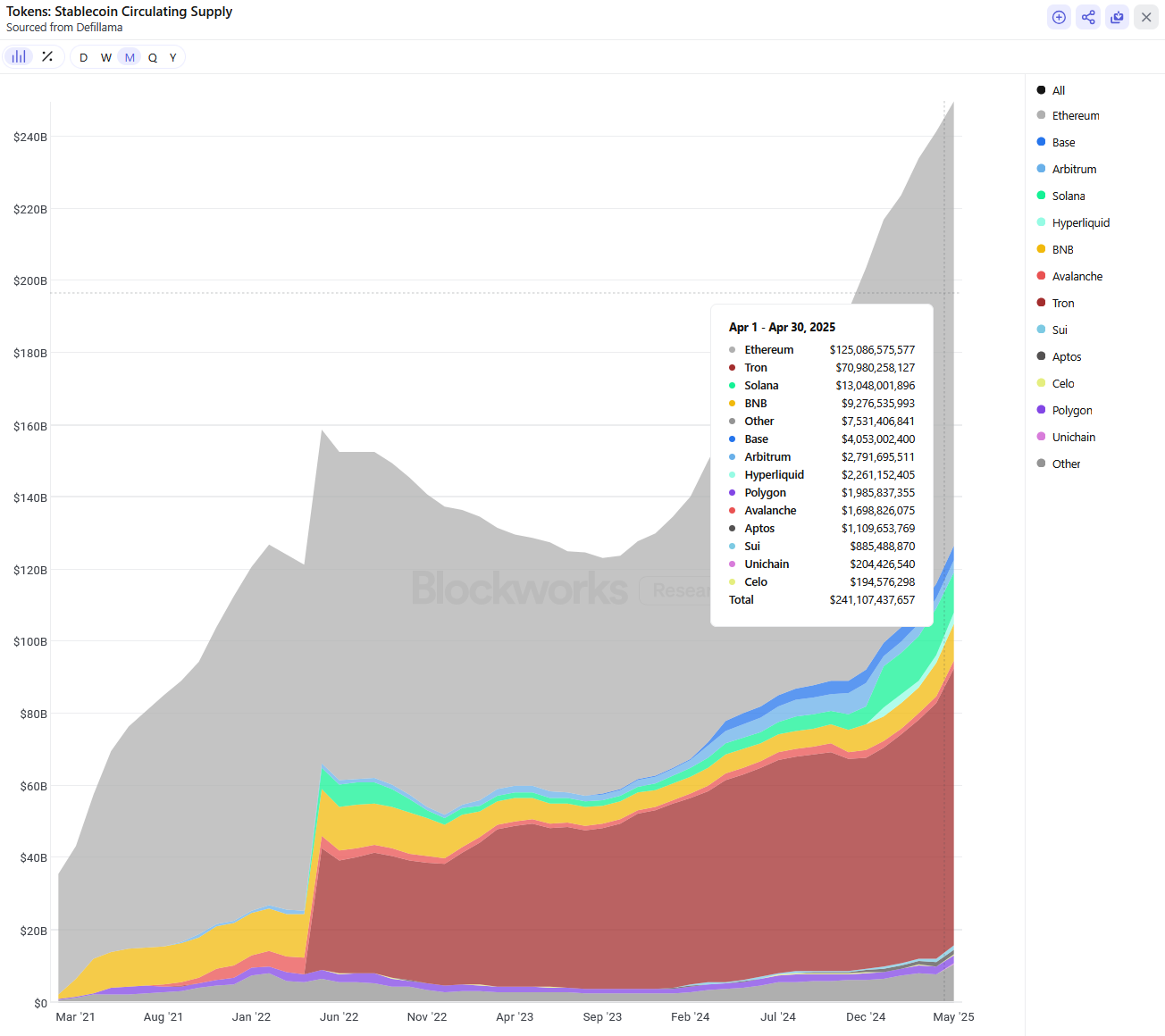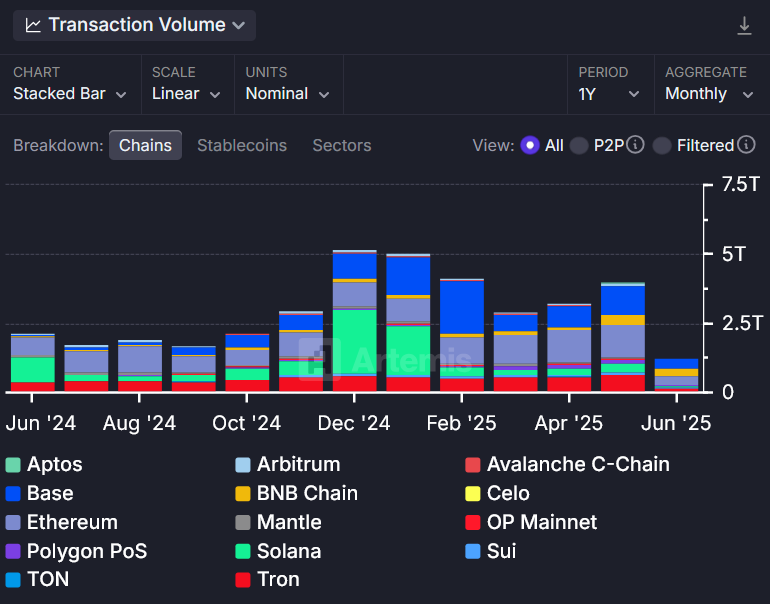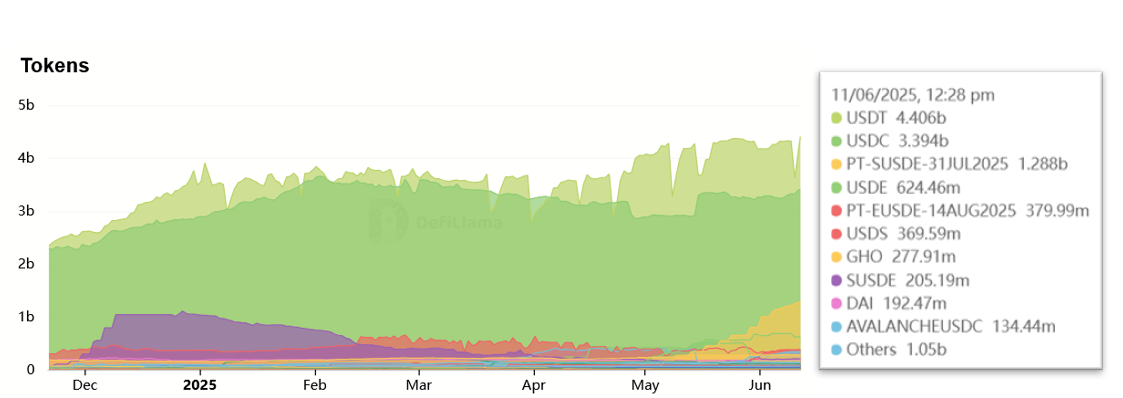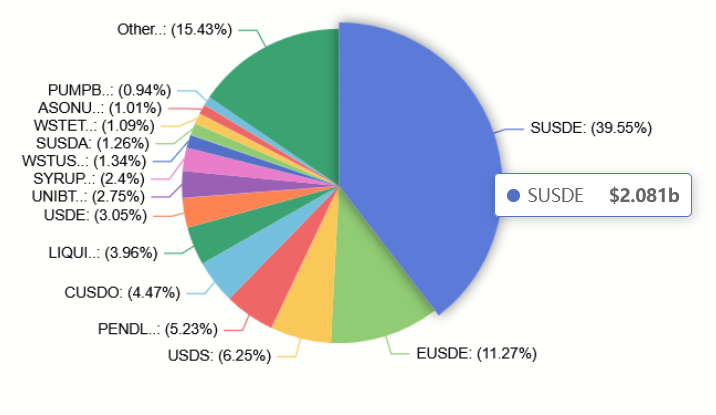This is a segment from the 0xResearch newsletter. To read full editions, subscribe.
In the wake of Circle’s IPO and Plasma’s token sale, stablecoins are undisputedly in vogue.
Meanwhile, the US Senate is going into a final vote on the landmark stablecoin bill, dubbed the GENIUS Act, this week.
What does the stablecoin landscape look like today?
First, total stablecoin supply remains up and to the right — $249 billion in the last week. USDT and USDC represent the lion’s share of stablecoins, about 88% ($218 billion) of the entire stablecoin market put together.

Okay, stablecoin supply is growing, but how are they being used?
B2B use cases drive the largest share of stablecoin usage today.
B2B cross-border payments tracked at nearly $3 billion in February 2025 alone, compared to $1.1 billion for card-based spending, $1.5 billion in peer-to-peer payments, or $275 million in B2C payments across the same time period.

18% of small and medium US businesses “[that] are aware of cryptocurrency” use stablecoins for their business needs in 2025 — up from 8% in 2024, according to Coinbase’s State of Crypto 2025 report.
The chains facilitating the most stablecoin transfers? Ethereum, Base and Tron.
In May, Ethereum saw $1.2 trillion in volumes (29%), while Base had $1 trillion (26%) and Tron $687 billion (17%). Total stablecoin volumes in May came up to $4 trillion.

Should the GENIUS Act come to pass, which players stand to gain the most?
If the GENIUS Act requires stablecoins to be backed by US dollars or Treasury bills, the answer is probably: TradFi regulated issuers such as Circle, traditional Fintech companies like PayPal, and banks and money market funds, Blockworks Research analyst Luke Leasure told me.
Decentralized stablecoins like Ethena’s USDe or Sky’s (previously Maker) USDS are not entirely backed by cash equivalents, so would not be compliant with GENIUS (unless registered in the US).
Yet, there are still downstream positive effects for DeFi from a burst in stablecoin growth.
In particular, money markets like Aave and Pendle stand to gain.
On Aave v3 alone (across all chains), stablecoins make up about $10.2 billion in TVL.

What about Pendle?
Though Pendle is technically a “yield trading” app, it has cemented itself as a de facto go-to-market platform for all yield-bearing assets, particularly stablecoins.

 blockworks.co
blockworks.co